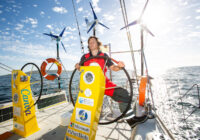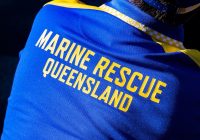The countdown has begun; SailGP is getting ready to return to the stunning Sydney Harbor for the sixth time. Not only is Sydney SailGP’s most visited venue but it also bears the mantle as the league’s birthplace, with our first ever event taking place here in 2019.
Ahead of returning to the iconic city, home driver Tom Slingsby reflects on the team’s stunning win in Auckland, how they mastered the new, high-speed T-Foils in record time and how the Flying Roos are preparing to stun home crowds when racing gets underway.
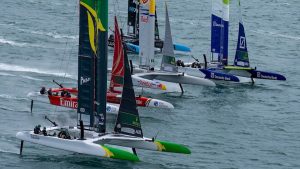
As a triple SailGP champion, Australia has earned its reputation as one of the top teams in SailGP. Despite this, the team had a mixed performance (by its own standards) last season, clinching just one event win out of nine event finals. The team admits it finds light wind conditions challenging; they finished 5th at the season starter in Dubai despite being tied on points with Spain in 4th and the United States in 3rd. Next, the windy venue of Auckland beckoned, where a choppy sea state and high winds challenged crews. If the spicy conditions weren’t enough, they also had to grapple with the fleet-wide roll out of the new high-speed T-Foils, a technical upgrade intended to improve the performance, control and safety of the F50s at high speeds.
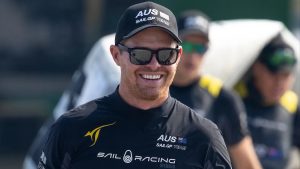
For some teams, particularly the greener ones, racing with the T-Foils for the first time in Auckland was a daunting challenge. But not Australia. “We were looking forward to the new challenge of mastering something we haven’t faced before in SailGP,” says driver Tom Slingsby. “Trying to adapt to something like that was a challenge that we really enjoyed.” The team, he says, was comfortable with the new equipment right away.
“In training, we felt strong – any time we were near another boat, we felt like we were going quickly.” Two days of practice racing followed, with the fleet going head to head on the start line for the first time. Once again, it was Australia which excelled – winning all six practice races across the two day schedule. “We adapted to the new foils quicker than the other teams for whatever reason,” says Slingsby. The team’s performance attracted the attention of the rest of the fleet, with teams immediately delving into SailGP’s shared data to see what the Aussies were doing differently. “Everyone had their own philosophies on how the foils should be used and what settings should be in place and we had ours,” Slingsby says. “After practice racing, everyone started coming out way and having similar settings.”
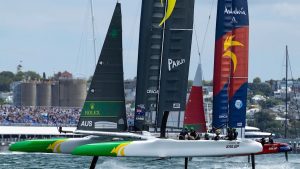
When official racing got underway, Slingsby was impressed by the fleet’s ability to adapt to the new foils – especially the newer teams of Mubadala Brazil and Red Bull Italy. A key area of concern highlighted by drivers is the shape of the T-Foils. Unlike the previous L-Foils, the T-Foils have two horizontal sections at the bottom of the shaft, one curves inwards – but the other curves outwards, away from the F50. This increases the risk of collision and clashing foils if the boats get too close. “You’ve got to be really careful”, Slingsby says. “Your first instinct is to get the boats really close to each other and engage.” Now, he says, he’s ‘reluctant’. “It does take a bit of getting use to, but all the teams did such a great job of making sure that no-one hit each other.”
While the fleet avoided any direct contact, Auckland stood out for the sheer number of close calls, near capsizes and dramatic nosedives. Slingsby specifically attributes the number of nosedives to unfamiliarity with the T-Foils, which ‘don’t give you much notice before a nosedive’. “The old foils used to give you a little bit more warning,” he says. “You could get high for a couple of seconds and have time to react. But if you get a little bit too high on the T-Foils, they will just fly down – it happens very quickly.” He attributes to the number of incidents in Auckland to ‘a mix of the conditions and adapting to the new foils.”
Key moments saw ROCKWOOL DEN come within inches of capsizing before racing on day two, while the United States suffered multiple hard nosedives across both days. The worst was reserved for Canada with flight controller Billy Gooderham injured in a nosedive ahead of racing on day two. With Gooderham taken to the hospital to be checked, the Canadian team considered its options as racing approached. Driver Giles Scott considered putting grinder Cooper Dressler into the flight controller role. But with only limited experience in light wind conditions, the team decided against it and sat out racing entirely.
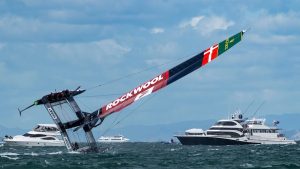
Despite the team’s frustration, Slingsby says this was ‘exactly the right call’. “It would have been a hospital pass to Cooper, with very limited time in that role to jump on – I think they actually would have injured more people,” he says. He adds the decision shows ‘the experience’ of the team. Gooderham’s injury and Canada’s inability to race raised questions about the squad depth of some teams, which Slingsby agrees is ‘a tough one’. “Most teams travel with one spare sailor who is required to jump in and fill multiple roles with very little practice time – it’s not an easy situation,” he says. However, ‘it’s just not feasible’ to travel the world ‘with an extra six people who won’t race.” He’s confident in Australia’s set up, which includes former Olympic champion Will Ryan listed as the roster’s spare sailor. Ryan, Slingsby says, is a wing trimmer, but ‘very fit’ allowing him to help out the team’s grinders. In the event of flight controller Jason Waterhouse being unable to race, grinder Kinley Fowler would be moved into that role, he says.
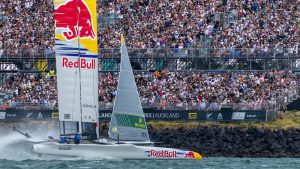
As well as commending Canada’s decisions on the race track, Slingsby was impressed with the performance of team Red Bull Italy in Auckland. The team picked up three third place finishes in fleet racing and finished the event in sixth overall. It’s worth noting that the Italians were racing with France flight controller Jason Saunders on board after Andrea Tesei was injured in training. “It’s the Italians’ second time racing in the league and they’re up there fighting for the podium,” Slingsby says – “I thought that was extremely impressive, especially in those conditions.” Red Bull Italy is also racing with former Australian wing trimmer Kyle Langford on board, who left the Aussies during the off-season transfer period.
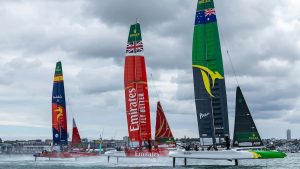
Despite losing a key player, Australia have bounced back quickly thanks to the appointment of seasoned wing trimmer Chris Draper. Slingsby, who sailed with Langford as his ‘right hand man’ for 15 years, says ‘it’s obviously a bit different’ without him. However, he describes Draper as ‘the perfect replacement’. “He’s fitted into the team very seamlessly, it’s been a really good transition and gone as well as we could have hoped for,” he says.
Looking ahead, Slingsby is ‘so excited’ to return to Sydney and the team’s ‘fond memories’ there. Australia has won the event three times out of five, with Emirates GBR winning a standalone event in 2020 and France winning on points in Season 3 when the second day of racing was cancelled. Slingsby looks back to last season when Sydney ‘broke the team’s streak of not winning’ – it was Australia’s only event win of the season. “We’ve got a great racing record in Sydney and generally sail really well on Sydney Harbor, so it’s exciting for us to come back.” He’s especially keen to carry forward the momentum of winning New Zealand’s home event in Auckland. “The team is gelling well, we’re full of confidence, we’re getting along well and it’s showing on the water.”
Despite this confidence, Slingsby says he ‘never goes into an event saying we’re going to win’. Specifically, he has his eyes on Peter Burling’s New Zealand, Dylan Fletcher’s Emirates GBR and Season 4 champions Spain after strong performances from all three teams in the first two events of the season. “It’s a new season and new teams are starting to come through that you weren’t expecting, but it feels like New Zealand, Spain, Emirates GBR and ourselves are the top teams at the moment,” he says. He also highlights Nicolai Sehested’s ‘strong’ Danish team and the expected return of Quentin Delapierre’s France, which won the event here in Season 3. “The French are an amazing team – they’re always there challenging and they can definitely come out and win events,” he says. The addition of France will increase the ‘already very crowded’ starting line up, Slingsby says. “I think it will feel a bit different, but it’s one of those things you need to adapt to on the fly and see how it feels on the start line.”
The KPMG Australia Sail Grand Prix | Sydney takes place on February 8/9.





